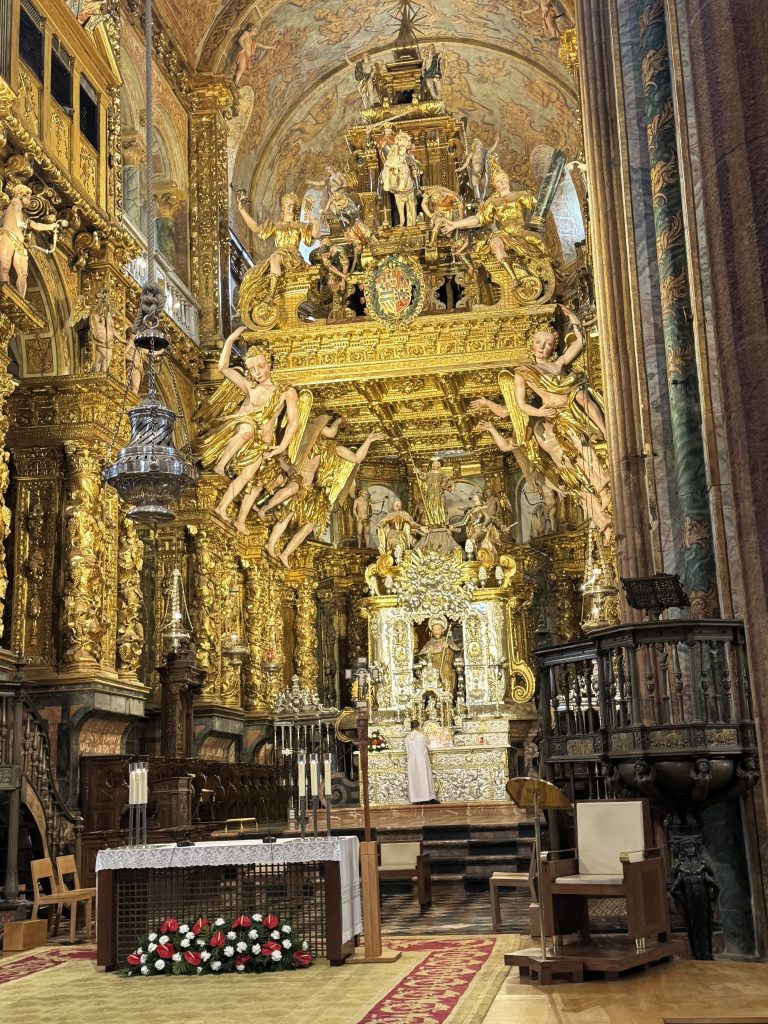
There is a curious truth that I have noticed about pilgrimage: everyone talks about the walking, the blisters, the weight of the backpack, the long days on the dusty road, and the blessed arrival at Santiago de Compostela. What we don’t talk about quite as much is what happens after you arrive—when the scallop shell is tucked away, the certificate (Compostela) is safely rolled up, and the weary pilgrim suddenly finds themselves back at home and wondering, “Well… now what?”
It’s rather like throwing a party. For weeks you’ve planned the food, the music, the guest list, the seating arrangements. The day arrives, everyone has a wonderful time, and then, after the last crumb of cake has been swept up, you stand in the empty room, not entirely sure whether to laugh, cry, or start vacuuming.
Pilgrimage endings have the same sort of anticlimax. After walking for days on end, sustained by the rhythm of boots on the path and conversations with fellow pilgrims, you suddenly stop. No more yellow arrows pointing the way. No more cafés selling café con leche at the exact moment when you thought your legs would give out. Instead, you are in Santiago—beautiful, holy, bustling Santiago—and you realize that the greatest challenge of the pilgrimage is not the blisters, but the question: what now?
It reminds me of the disciples after the Resurrection. They had walked with Jesus, listened to his teaching, watched miracles unfold before their eyes. And then, suddenly, He was gone — ascended into heaven, leaving them standing, rather awkwardly, staring into the sky. Two angels had to snap them out of it, saying in essence, “Stop gawking. You’ve got work to do.”
And so it is with us. Pilgrimage doesn’t end at the cathedral doors. It begins there. The road teaches us to slow down, to pay attention, to notice God in the small and the ordinary. Santiago is not the full stop; it’s the capital letter at the beginning of the next sentence of your life.
Of course, the first “next thing” many pilgrims do is indulge in a celebratory feast, often involving more octopus than one would think advisable for a single sitting. And then there’s the matter of the line at the pilgrims’ office. Nothing says “holy closure” quite like standing in a bureaucratic queue while a tired clerk inspects your passport and stamps with all the joy of a man who has stamped precisely 4,000 of them already that day. It’s the Church’s way of reminding us that holiness and waiting in line are often very closely related.
But beneath the humour lies the deeper truth: God calls us not only to walk the sacred road, but to carry its lessons back home. If the Camino teaches you to greet a stranger with kindness, then practice that on your street corner. If the Camino teaches you to travel light, then try releasing the spiritual baggage you’ve been carrying for years. And if the Camino teaches you that God meets us in bread, wine, and shared tables, then look for Him at your own dinner table, even if it’s only soup and grilled cheese.
Arriving at Santiago is not the end of the story. It is the reminder that life itself is pilgrimage, and that the holy work continues long after the walking stops. For the true Compostela is not a certificate, but a life lived with gratitude, humility, and joy — boots or no boots.